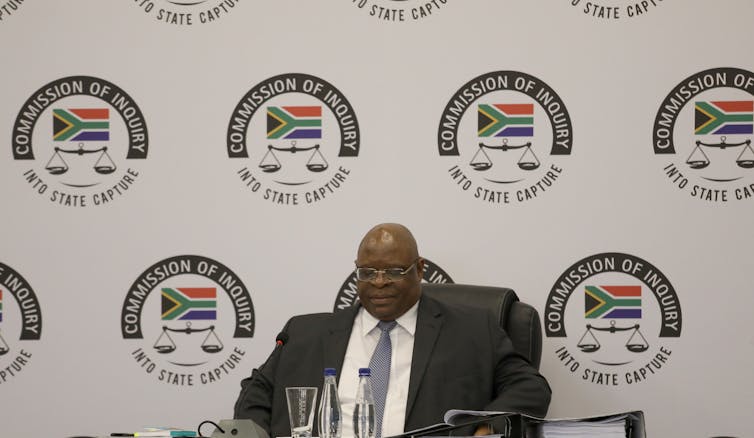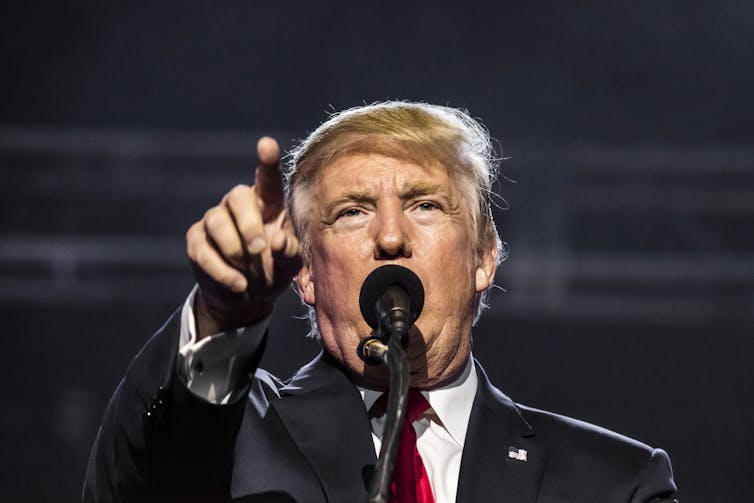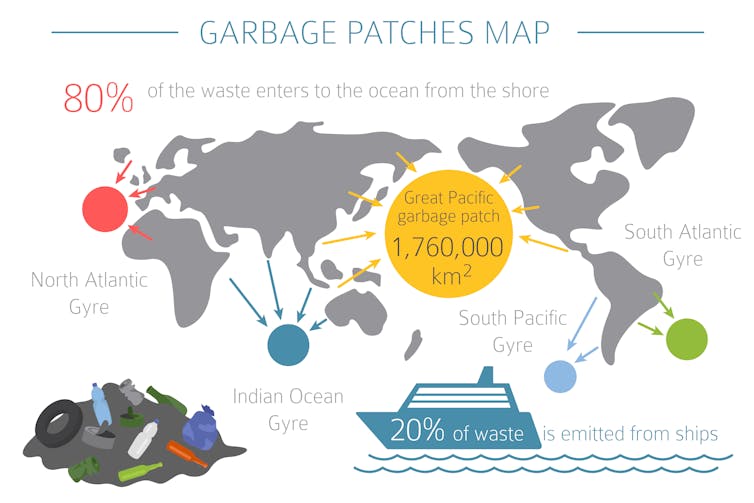
Africa Studio
Tomas Bokedal, University of Aberdeen
In the years after Jesus was crucified at Calvary, the story of his life, death and resurrection was not immediately written down. The experiences of disciples like Matthew and John would have been told and retold at many dinner tables and firesides, perhaps for decades, before anyone recorded them for posterity. St Paul, whose writings are equally central to the New Testament, was not even present among the early believers until a few years after Jesus’ execution.
But if many people will have an idea of this gap between the events of the New Testament and the book that emerged, few probably appreciate how little we know about the first Christian Bible. The oldest complete New Testament that survives today is from the fourth century, but it had predecessors which have long since turned to dust.
So what did the original Christian Bible look like? How and where did it emerge? And why are we scholars still arguing about this some 1,800 years after the event?
From oral to written
Historical accuracy is central to the New Testament. The issues at stake were pondered in the book itself by Luke the Evangelist as he discusses the reasons for writing what became his eponymous Gospel. He writes: “I too decided to write an orderly account … so that you may know the certainty of the things you have been taught.”
In the second century, church father Irenaeus of Lyons argued for the validity of the Gospels by claiming that what the authors first preached, after receiving “perfect knowledge” from God, they later put down in writing. Today, scholars differ on these issues – from the American writer Bart Ehrman stressing how much accounts would be changed by the oral tradition; to his Australian counterpart Michael Bird’s argument that historical ambiguities must be tempered by the fact that the books are the word of God; or the British scholar Richard Bauckham’s emphasis on eye-witnesses as guarantors behind the oral and written gospel.

Wikimedia
The first New Testament books to be written down are reckoned to be the 13 that comprise Paul’s letters (circa 48-64 CE), probably beginning with 1 Thessalonians or Galatians. Then comes the Gospel of Mark (circa 60-75 CE). The remaining books – the other three Gospels, letters of Peter, John and others as well as Revelation – were all added before or around the end of the first century. By the mid-to-late hundreds CE, major church libraries would have had copies of these, sometimes alongside other manuscripts later deemed apocrypha.
The point at which the books come to be seen as actual scripture and canon is a matter of debate. Some point to when they came to be used in weekly worship services, circa 100 CE and in some cases earlier. Here they were treated on a par with the old Jewish Scriptures that would become the Old Testament, which for centuries had been taking pride of place in synagogues all over latter-day Israel and the wider Middle East.
Others emphasise the moment before or around 200 CE when the titles “Old” and “New Testament” were introduced by the church. This dramatic shift clearly acknowledges two major collections with scriptural status making up the Christian Bible – relating to one another as old and new covenant, prophecy and fulfilment. This reveals that the first Christian two-testament bible was by now in place.
This is not official or precise enough for another group of scholars, however. They prefer to focus on the late fourth century, when the so-called canon lists entered the scene – such as the one laid down by Athanasius, Bishop of Alexandria, in 367 CE, which acknowledges 22 Old Testament books and 27 New Testament books.
Bible #1
The oldest surviving full text of the New Testament is the beautifully written Codex Sinaiticus, which was “discovered” at the St Catherine monastery at the base of Mt Sinai in Egypt in the 1840s and 1850s. Dating from circa 325-360 CE, it is not known where it was scribed – perhaps Rome or Egypt. It is made from parchment of animal hides, with text on both sides of the page, written in continuous Greek script. It combines the entire New and Old Testaments, though only about half of the old survives (the New Testament has some fairly minor defects).
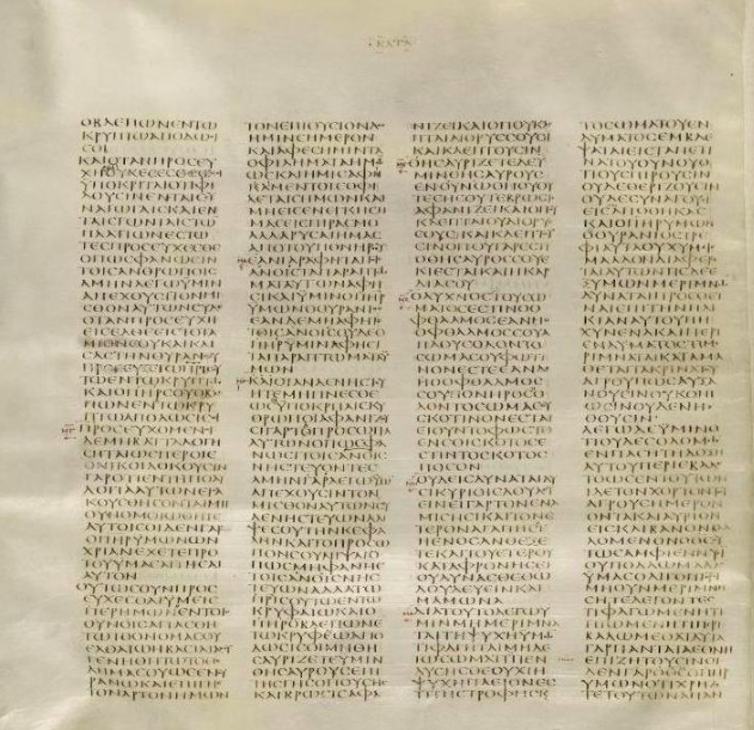
Wikimedia
Sinaiticus may not be the oldest extant bible, however. Another compendium of Old and New Testaments is the Codex Vaticanus, which is from around 300-350 CE, though substantial amounts of both testaments are missing. These bibles differ from one another in some respects, and also from modern bibles – after the 27 New Testament books, for example, Sinaiticus includes as an appendix the two popular Christian edifying writings Epistle of Barnabas and Shepherd of Hermas. Both bibles also have a different running order – placing Paul’s letters after the Gospels (Sinaiticus), or after Acts and the Catholic Epistles (Vaticanus).
They both contain interesting features such as special devotional or creedal demarcations of sacred names, known as nomina sacra. These shorten words like “Jesus”, “Christ”, “God”, “Lord”, “Spirit”, “cross” and “crucify”, to their first and last letters, highlighted with a horizontal overbar. For example, the Greek name for Jesus, Ἰησοῦς, is written as ⲓ̅ⲥ̅; while God, θεός, is ⲑ̅ⲥ̅. Later bibles could present these in gold letters or render them bigger or more ornamental, and the practice endured until bible printing began around the time of the Reformation.
Though Sinaiticus and Vaticanus are both thought to have been copied from long-lost predecessors, in one format or the other, previous and later standardised New Testaments consisted of a four-volume collection of individual codices – the fourfold Gospel; Acts and seven Catholic Epistles; Paul’s 14 letters (including Hebrews); and the Book of Revelation. They were effectively collections of collections.
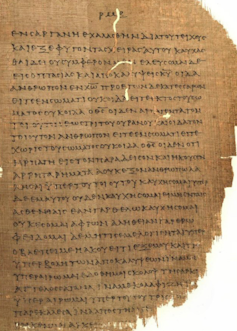
But in the absence of a single book prior to the fourth century, we have to content ourselves with the many surviving older fragments sensationally found during the 20th century. We now have some 50 fragmentary New Testament manuscripts written on papyrus that date from the second and third centuries – including the valuable Papyrus 45 (fourfold Gospel and Acts), and Papyrus 46 (a collection of Pauline letters). In all, these comprise almost complete or partial versions of 20 of the 27 books in the New Testament.
The quest will likely continue for additional sources of the original books of the New Testament. Since it is somewhat unlikely anyone will ever find an older Bible comparable with Sinaiticus or Vaticanus, we will have to keep piecing together what we have, which is already quite a lot. It’s a fascinating story which will no doubt continue to provoke arguments between scholars and enthusiasts for many years into the future.![]()
Tomas Bokedal, Associate Professor in New Testament, NLA University College, Bergen, Norway, and Lecturer in New Testament, University of Aberdeen
This article was originally published on The Conversation. Read the original article.
Like this article? Subscribe for free to ZA Confidential to receive our newsletters: zaconfidential@gmail.com.
 Theresa May with her South African counterpart, Cyril Ramaphosa.
Theresa May with her South African counterpart, Cyril Ramaphosa. 




